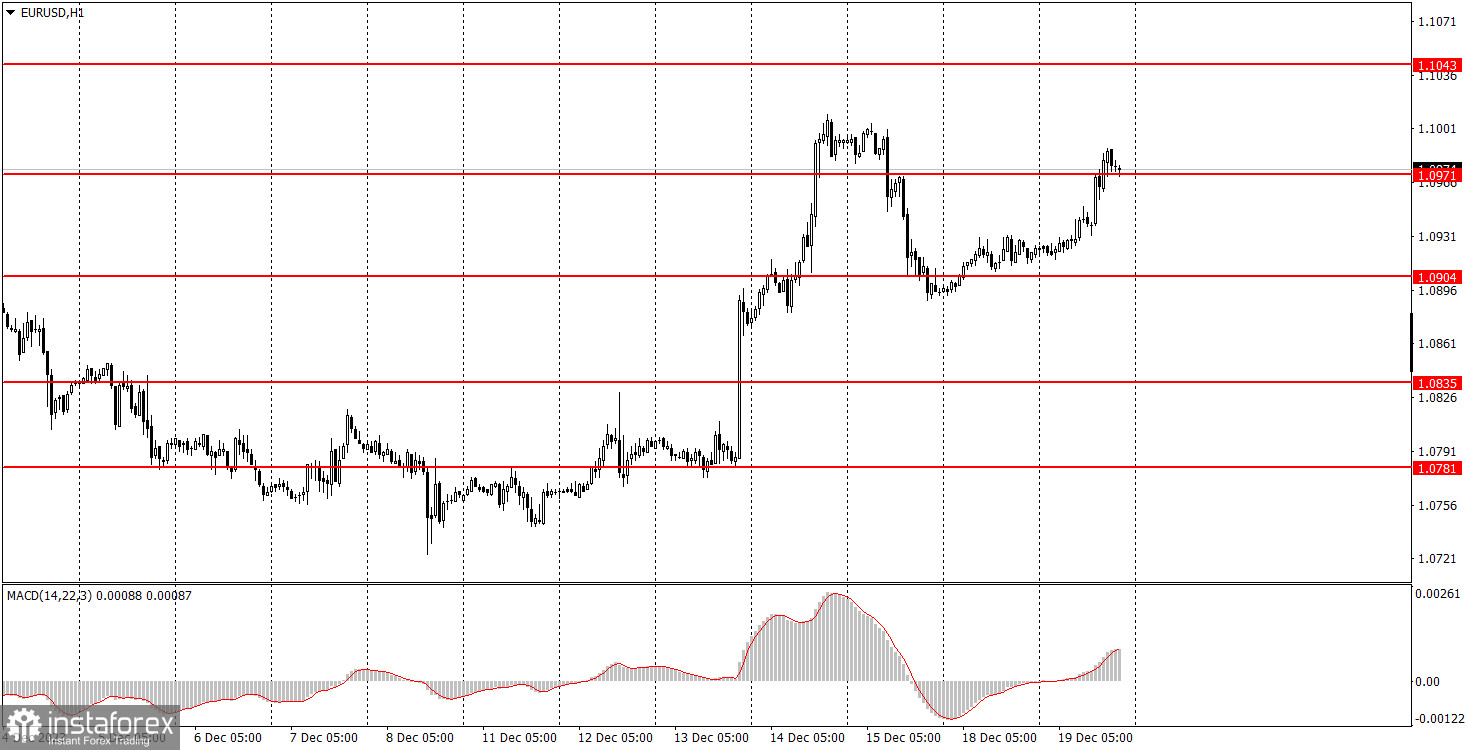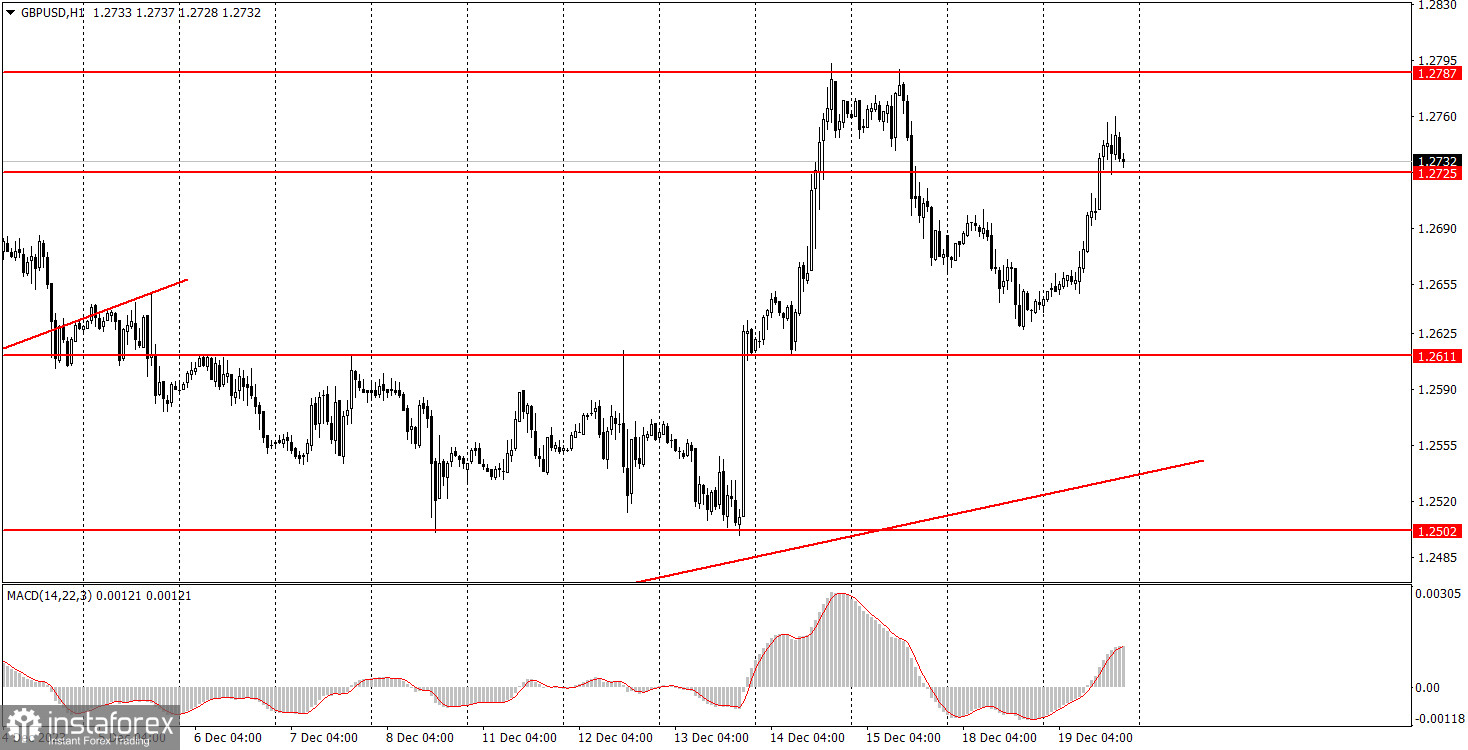Analysis of macroeconomic reports:

For Wednesday, the lineup of macroeconomic events is practically barren. In general, the UK's inflation figures for November will be in focus. Base inflation is an important indicator for the Bank of England, and it is decreasing very slowly in Britain. The slower the decline in headline and core inflation, the longer the central bank will leave rates at their current level, which can be considered a hawkish factor. If inflation starts to accelerate, it will be a reason to talk about another rate hike, as mentioned by BoE Governor Andrew Bailey last week. If inflation falls faster than the forecasts, the pound will have even less reasons to rise.
Analysis of fundamental events:
From Wednesday's fundamental events, only a speech by European Central Bank Chief Economist Philip Lane stands out. However, he already spoke on Monday and did not say anything important. It is quite difficult to expect significant statements from ECB, BoE, and Federal Reserve representatives since Christine Lagarde, Andrew Bailey, and Jerome Powell already made comprehensive statements last week. The market clearly understands what to expect from the central banks in the near future.
General conclusion:
On Wednesday, only one key event is expected, which is the inflation report from the UK. This is an important report because the key rate in the UK still depends on inflation. Or how long it will remain at its peak value. The higher inflation is, the more chances the British currency has to rise further.
Basic rules of a trading system:
1) Signal strength is determined by the time taken for its formation (either a bounce or level breach). A shorter formation time indicates a stronger signal.
2) If two or more trades around a certain level are initiated based on false signals, subsequent signals from that level should be disregarded.
3) In a flat market, any currency pair can produce multiple false signals or none at all. In any case, the flat trend is not the best condition for trading.
4) Trading activities are confined between the onset of the European session and mid-way through the U.S. session, post which all open trades should be manually closed.
5) On the 30-minute timeframe, trades based on MACD signals are only advisable amidst substantial volatility and an established trend, confirmed either by a trend line or trend channel.
6) If two levels lie closely together (ranging from 5 to 15 pips apart), they should be considered as a support or resistance zone.
How to read charts:
Support and Resistance price levels can serve as targets when buying or selling. You can place Take Profit levels near them.
Red lines represent channels or trend lines, depicting the current market trend and indicating the preferable trading direction.
The MACD(14,22,3) indicator, encompassing both the histogram and signal line, acts as an auxiliary tool and can also be used as a signal source.
Significant speeches and reports (always noted in the news calendar) can profoundly influence the price dynamics. Hence, trading during their release calls for heightened caution. It may be reasonable to exit the market to prevent abrupt price reversals against the prevailing trend.
Beginning traders should always remember that not every trade will yield profit. Establishing a clear strategy coupled with sound money management is the cornerstone of sustained trading success.






















